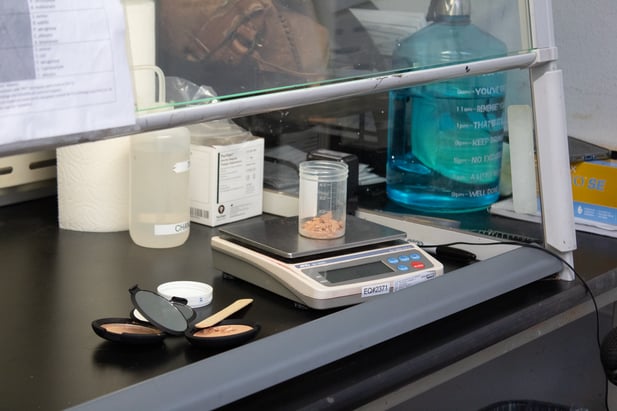OTC and OTC-drug crossover products require stability testing, per FDA regulations. And, while FDA doesn’t mandate stability testing for cosmetics, it is the manufacturer's responsibility to ensure product safety prior to marketing the product, and many manufacturers use stability testing to verify safety. In addition, trade groups like the PCPC recommend stability testing for safety substantiation.
Real-time stability testing can take years to complete. Companies don’t have the luxury of waiting that long when they have a new product they want to market. Accelerated stability testing for cosmetics and OTC products can provide tentative shelf-life claim data needed to verify safety and quality sooner while awaiting the data from your real-time testing.
In this blog post, we’ll look at the benefits of accelerated stability testing for cosmetic and OTC products and how it's designed and conducted.
What Affects Product Stability?
Several variables affect the stability of your cosmetic and OTC products during their normal lifespan, including the environment in which they are stored and used, temperature, humidity, and light exposure.
Though preservatives are often added to products to counter these effects, they can break down over time. The combination of microorganisms coupled with a breakdown of preservatives is a major reason stability testing is so important.
Without stability testing, the length of time a product could be considered usable is at best a guess.
What Is Stability Testing for Cosmetic and OTC Products?
We take a deep dive on how to perform stability testing for cosmetics and OTC products in this blog. In summary, stability testing evaluates the chemical and physical integrity of the product over time. It evaluates parameters such as…
- Appearance
- Color
- Odor
- Viscosity
- pH
- Packaging
Technicians pull the product from the chambers at set intervals to test for physical, chemical, and microbiological characteristics.
The Regulations Can Get Confusing…
Stability testing of OTC products, unless exempt under 21 CFR 211.137(g), must meet the FDA’s thinking on the subject as outlined in FDA’s Guidance for Industry on Stability Testing of New Drug Substances and Products.
FDA indicates expectations for the types of tests and conditions under which those tests should be conducted. FDA recommendations align with those of the International Code of Harmonization (ICH) accepted by the European Medicines Agency.
The OTC-focused Consumer Healthcare Products Association (CHPA) aligns with ICH and offers flexibility compared to a new chemical entity or Rx drug product. Although the FDA has not made any formal announcement, these guidelines may end up serving as models for cosmetics as well as for development of the requirements to substantiate product safety introduced in the Modernization of Cosmetics Regulation Act (MoCRA).
If all the regulations get confusing, you’re not alone. There are often gray areas when it comes to stability testing for cosmetics, OTC, and other products. Our experts understand the nuances and can provide guidance; contact us with questions and we will be happy to help.
In the meantime, this blog explains cosmetic and OTC regulatory requirements for stability testing.
How is Accelerated Stability Testing for Cosmetic Products & OTC Products Designed and Conducted?
Because stability testing determines a product’s life expectancy spanning storage, shipment, and length of time the product is likely to be in use, the environmental conditions in which they are conducted must be closely manipulated and monitored to provide meaningful data.
Temperature is one such environmental control, as is humidity. Stability tests should also include a variety of light or photostability conditions, in addition to accelerated, intermediate, and real-time conditions. These variables give the broadest spectrum of conditions under which a product may be stored and used.
Determine Expiration Dates for OTC Product Before Marketing Them in the U.S.
As product quality will typically degrade over time, long-term stability studies of typically 2-3 years or 5 years in length will provide data from which expiration dating is determined. FDA requires testing for OTCs and cosmetic/OTC crossover products to be completed and expiration dates determined before the product is marketed in the U.S.
FDA also indicates proposed retest periods based on the type of drug product, including real-time concurrent stability studies conducted at varying intervals, usually…
- Every three months in the first year.
- Every six months during the second year.
- Annually thereafter during an FDA proposed retest period.
That means a minimum three-year testing window is required prior to product marketing.

But I Don’t Have 3 Years to Wait
However, manufacturers generally can’t wait three years for their products to reach consumers. That’s why many manufacturers conduct accelerated stability testing in parallel with standard stability testing.
Accelerated testing environments are manipulated to simulate the given length of time under assessment. For example, 6 months of accelerated stability testing can equal a 24-month shelf-life claim.
FDA recommends including a minimum of three points of time in accelerated stability studies: zero, three, and six months.
Stability studies may also indicate further testing is needed based on significant changes such as a 5% change in assay from initial value or failure to meet any acceptance criteria for potency, appearance, physical attributes, pH, and/or functionality.
In these cases, an intermediate or real-time condition stability study may be warranted that includes a minimum of four time points analyzed:
- Time 0
- 6 months
- 12 months
- 24 or 36 months
However, it is recommended to test for additional intervals for trending.
Test 3 Batches of Product for Accelerated Stability Testing
For OTC drugs and cosmetic/OTC drug combination products, FDA will expect to see detailed results of stability studies for drug products conducted on at least three primary batches, manufactured in the same way, in the same conditions, and using the same or simulated container closure systems that will be used in product packaging and distribution.
FDA also expects a manufacturer commitment to continued stability studies when long-term stability data on primary product batches is incomplete at the time of product launch. Any changes to formulations or packaging will require new stability tests to be conducted, or at a minimum, completion of a risk assessment or scientific justification for an alternate approach.
Microbial Contamination
Stability testing in accordance with USP general chapter <61> and <62> assesses microbial limit enumeration for the following:
- Staphylococcus aureus
- Pseudomonas aeruginosa
- Bacillus subtilis
- Candida albicans
- Aspergillus brasiliensis
- TPC and Mold
Results are compared to allowable limits of ICH guidelines as referenced in USP <1111>.
Pass/fail testing per the indicated USP method must also be conducted:
USP <61>
- Staphylococcus aureus
- Pseudomonas
- Salmonella
- Bile-tolerant Gram-negative bacteria
- Clostridia
- Candida albicans
USP <60>
- Burkholderia cepacian Complex (Bcc)
Additionally, heavy metal contamination is a major concern for cosmetic products, particularly with today’s focus on “clean” labels. Testing for lead, mercury, arsenic, cadmium, and antimony with methods USP <232> and USP <233> can provide an assessment of supply chain ingredient integrity.
Challenge Studies for Cosmetics, OTC, and Crossover Products
Beyond stability testing, there are numerous additional tests cosmetic and personal care product manufacturers may wish to consider. In addition, there are several laboratory product testing services for OTC products.
Challenge testing per USP <51> is used to assesses the effectiveness of preservatives used in cosmetics, OTC, and cosmetic/OTC crossover products. By incubating the product following the introduction of high concentrations of microorganisms, active and inactive ingredient stability can be assessed.
If you’re ready to start your next accelerated stability testing protocol for your cosmetics, OTC, or personal care products, provide a few details here and we’ll send you a quote.



